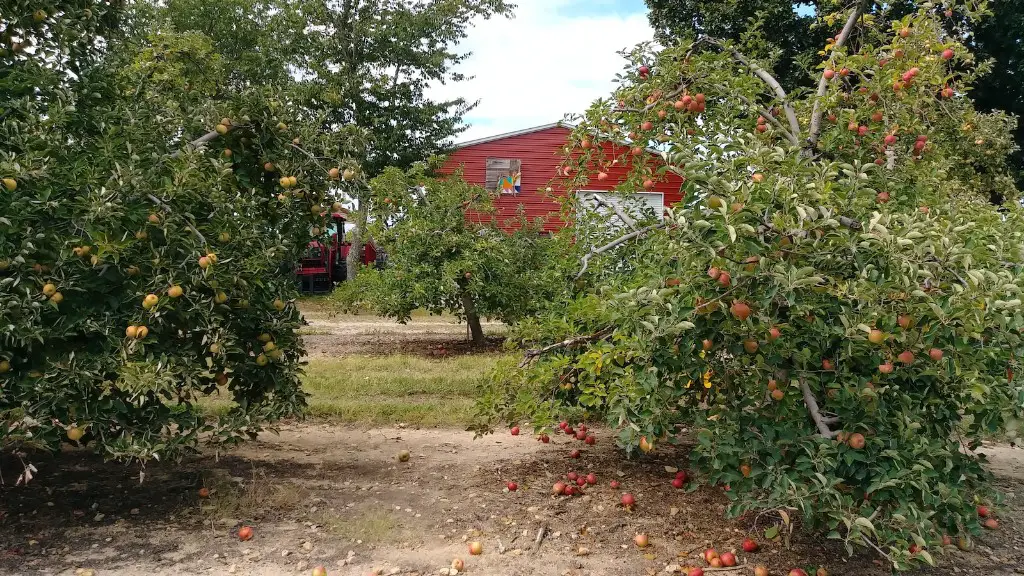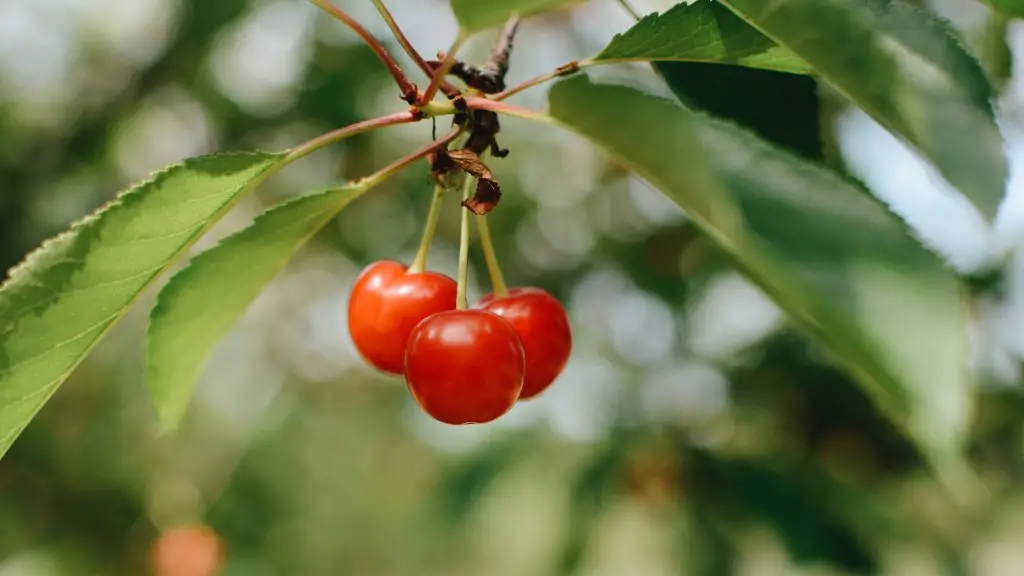Growing a cherry tree from a fresh seed can be rewarding and filled with great insight into how to nurture and care for a tree over the years. For those looking to start this process, they should know they are in for a long journey that requires patience, dedication and attention to detail. In this article, we will discuss the preparation, planting and nurturing of a cherry tree from seed.
Soil Preparation
The first step for growing a cherry tree from seed is soil preparation. Find a spot with well-drained soil with at least 6 hours of sunlight a day. Remove all grass, weeds and other debris from the ground, taking care not to damage any of the surrounding plants or trees. Once this is done, dig a hole around 12-14 inches into the ground and fill it with a mixture of compost, sand, peat moss and well-rotted manure. This mixture should ensure your cherry tree has access to plenty of moisture and nutrients as it grows.
Planting Instructions
After soil preparation, it’s time to plant your cherry tree seeds. First, make sure the seeds are fresh, as those collected during the previous year are often no longer viable. To plant the seeds, wet them with water and squeeze some of the moisture out before planting them just one inch below the surface of the soil. Now, make sure the seed is completely covered with soil and slightly press the area around the seed to make sure it won’t be disturbed. The hole should be three to four inches wide and six inches deep.
Nurturing the Tree
After planting, it’s important to nurture your cherry tree properly. Water the new seedling regularly to ensure it’s receiving enough moisture, but be careful not to over water. Also, make sure to keep the area around the tree free of grass and weeds, and don’t allow anything to shade the tree. Many experts recommend adding a layer of mulch around the base of the tree to help it retain moisture and keep the weeds away.
Fertilizing
Fertilizing is key when it comes to growing cherry trees from seed. But it’s important to note that too much fertilizer can be detrimental to seedlings. Experts recommend fertilizing seedlings every three to four weeks using an organic fertilizer or a 10-10-10 fertilizer dissolved in water. Make sure to follow the directions on the product for the best results.
Pruning
Pruning is also vital to the health of your cherry tree, especially during the first few years of growth. Pruning encourages healthy growth and helps remove any weak or dead branches and encourage better air circulation. Prune lightly every year, removing diseased or damaged branches as needed. Try to keep the shape of the tree symmetrical and balanced.
Winter Preparation
Once temperatures begin to fall, it’s important to prepare your cherry tree for winter. Before the cold weather sets in, make sure to give your tree one last deep watering so that it won’t dry out in the winter. Also, wrap the trunk of the tree in burlap or another insulating material to protect it from the wind. Lastly, adding a layer of mulch over the root area will help protect the tree from the frigid winter temperatures.
Harvesting
Once your cherry tree is established, it’s ready to be harvested. Before picking, make sure the cherries are fully ripe and a uniform deep red color all over. Carefully remove the cherries with your hands or with a pair of scissors, making sure not to damage any of the branches or leaves. Keep in mind that cherries will only last a few days at most once picked, so it’s best to pick and eat the cherries as soon as possible.
Growing a Cherry Tree from Seed in a Container
If you don’t have access to outdoor land or ideal soil conditions, you can still grow a cherry tree from seed in a pot. To do this, find a pot that is large enough for the roots to spread out and fill it with a high-quality potting soil mixed with compost and sand. Plant the seed one inch below the surface of the soil and water regularly, making sure to drain any excess water. Place the pot in an area with at least six hours of direct sunlight.
Caring for a Mature Cherry Tree
When it comes to caring for a mature cherry tree, it’s important to keep soil healthy and free of pests and weeds. Prune the tree each year to remove dead or diseased branches, and water regularly during periods of drought. As previously mentioned, adding a layer of mulch around the base of the tree can help keep the nutrients and moisture in. Additionally, if the tree remains healthy, it will produce more cherries each year.
Pest Control
Pests can be a threat to your cherry tree, especially during the warmer months of the growing season. Most common pests include aphids, whiteflies, scale insects and caterpillars, to name a few. To take care of these creatures, keep a close eye on your tree and if you notice any infestations, you should take immediate action. Natural insecticides are preferred, but you can also use more toxic chemicals as a last resort if necessary.
Disease Prevention
By keeping an eye out for pests, you can also prevent diseases from taking over your tree. Common illnesses include leaf spot, botrytis, powdery mildew and bacterial canker. To prevent these, keep your cherry tree healthy with the proper care. Additionally, pick off any diseased leaves or branches to avoid the spread of these illnesses to the other parts of the plant.



